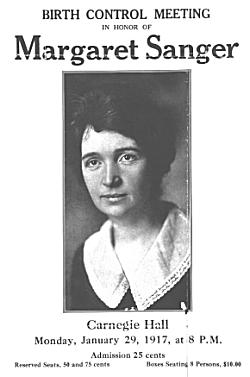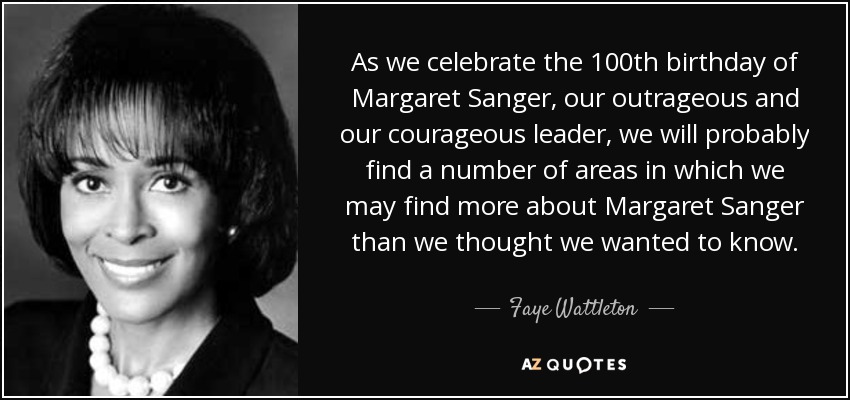Born to a Roman Catholic working class Irish American family she was one of 11 children. Anne, her mother had also had several miscarriages. The many pregnancies played a roll in the downturn of her health. The number of children was also more than the families incomes could handle. In addition, her father had a trade as an Irish stonemason but did not always work as he liked to drink and be with "the boys"
Sanger started a campaign to educate women about sex in 1912. She used her newspaper column titled "What Every Girl Should Know" to get the message out. Sanger also used her outlet of being a nurse to help poor immigrant neighborhoods. Many women in these neighborhoods had went thru back alley abortions and needed cared for Because of the sufferings that she found among the women she met she determinedly shared birth control information and contraceptives that were available. Meanwhile Sanger started dreaming of a "magic pill" to use to control pregnancy.
"No woman can call herself free until she can choose consciously whether she will or will not be
a mother," Sanger said.
In 1914 Sanger would once again use her journalist skills to write a feminist publication. The Woman Rebel promoted the woman's right to birth control. It would be this publication that would land her in trouble. Breaking the law to send out information on contraception through the mail. In order to avoid jail she fled to England.
In England Sangler worked in the women's movement and did research. In October 1915 the charges against her were dropped and she returned to the United States. Returning to the states she would smuggle in contraception known as diaphragms. Once again she would continue to promote birth control. However once again she would once again find herself in trouble.
Together with her sister Sanger opened the first birth control clinic in the United States. During a raid of the Brooklyn clinic shortly after it opened both sisters and the staff were arrested. Charges included providing information on contraception and fitting women for diaphragms. Together Sanger and her sister would spend 30 days in jail for breaking the Comstock Law. Perhaps this was a good thing as while the charges were not dropped a court ruling in favor of birth control did come about.
The court ruled that doctors could prescribe contraception to their female patients for medical reasons. In 1921 Sanger established the American Birth Control League. She served as president of the organization for the next 7 years. Following her presidency Sanger started a National Committee on Federal Legislation for Birth Control.
In 1929 the committee sought to make it legal for doctors to freely distribute birth control. They wanted to make it legal for doctors to be free to issue information about birth control. In 1936 the U.S. court of Appeals allowed for birth control devices and other materials to be imported into the country. Sanger had worked hard for the cause but she had many critics as well.
While Sanger stood up for the womens rights to birth control she seemed to have other sides as well. For example
- she was associated with branch of those in the scientific world known as eugenics. The eugenics wanted to limit the human species through selective mating. "She believed that women wanted their children to be free of poverty and disease, that women were natural eugenicists, and that birth control, which could limit the number of children and improve their quality of life, was the panacea to accomplish this."
- Sanger supported sterilization of the mentally ill and mentally impaired.
shared at these blog hops, linkups and parties
wow me wednesday
shared on these facebook group linkups
RT club === 3/23 === 1 rt






No comments:
Post a Comment
I love comments so if you have a minute leave me your thoughts on the above post